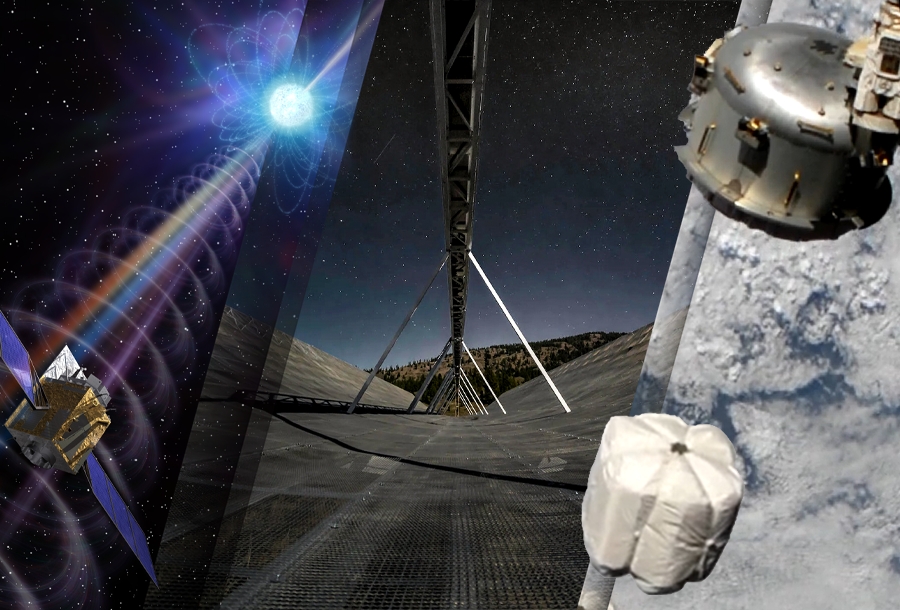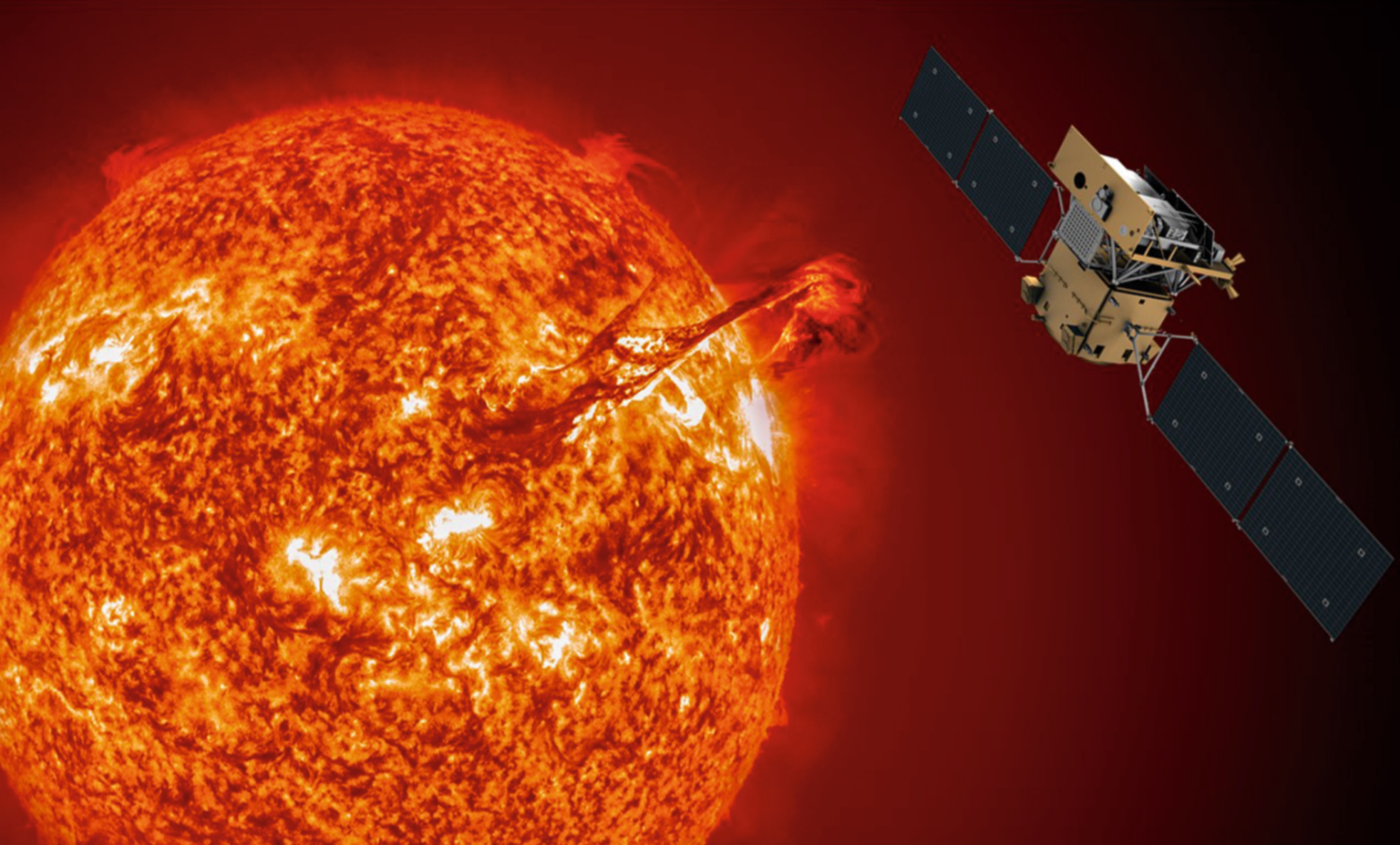Selection of the most interesting space news for the week: China to launch an observatory to study the Sun. Scientists have found an object with the most powerful magnetic field in the Universe, and we are talking about tissue engineering and the creation of organs in space.

- James Webb noticed “life indicators” at the first planet
- Found an object with the most powerful magnetic field in the universe
- China to launch observatory to study the Sun
- Super Heavy “flared up” during tests
- Garbage cannon was fired at the ISS: video
- A strange radio signal in space turned out to be similar to a heartbeat
- Moonglow (book review) (article)
James Webb noticed “life indicators” at the first planet
This week, the whole world saw for the first time the first color photographs taken by the powerful James Webb Telescope. One of the objects studied was the nebulous exoplanet WASP-96 b, located 1,150 light-years from Earth. The telescope took its spectrum, but thanks to them, experts found a clear trace of water on this planet.
To identify “indicators of life” on distant planets – molecules of water, methane and carbon dioxide – astronomers point a telescope at known exoplanets in our Milky Way galaxy and stare at their spectra. The light spectrum recorded by James Webb showed that WASP-96 b blocks light waves from water molecules – this means that water vapor is present in the clouds of the distant exoplanet. The NIRISS device recorded these detailed data in six hours of observations.
Found an object with the most powerful magnetic field in the universe
A binary star system with a neutron star has set a world record for the strength of the magnetic field. Scientists took measurements and were stunned by the results – the strength of the magnetic field is at the level of 1.6 billion Tesla (16 trillion Gauss), which exceeds the record of 1 billion Tesla, set in 2020. This figure is about 150 million times higher than the magnetic force in the most powerful MRI machine in the world.
Market News

China to launch observatory to study the Sun
In October 2022, China will launch a new ASOS space observatory (Advanced Space-based Solar Observatory). It will study the Sun, its magnetic field, flares, coronal mass ejections and other processes associated with the beginning of the 25th cycle of activity. This is stated in an announcement published by the National Center for Space Science.
The weight of the ASO-S will be 888 kg. It will receive a set of three scientific instruments: a Full-disk Vector MagnetoGraph, a Hard X-ray Imager and a Lyman-alpha Solar Telescope. The spacecraft will be launched into a 720-kilometer sun-synchronous orbit by the Long March 2D rocket.
Super Heavy “flared up” during tests
During the testing of the prototype of the first stage of the Super Heavy, a fire occurred. SpaceX’s specialists are currently assessing the damage caused. SpaceX conducted another series of tests of the Super Heavy prototype, a huge stage that will be used to launch the new Starship spacecraft. At some point, a large fireball flared out of the propulsion system of the unit. It led to a fire on the launch pad, which was eliminated after a while.
Interesting
Garbage cannon was fired at the ISS: video
Even astronauts on the International Space Station (ISS) have to take out the garbage. Traditionally, waste from the ISS is simply stored in a cargo spacecraft, which delivers provisions and equipment to astronauts, and then remains docked until it is filled with garbage. Then the cargo spacecraft is disconnected and sent to burn up in the atmosphere. Thus, without a spaceship, disposal becomes more complicated. But now the station crew has a new way to get rid of garbage — shoot them.
The new garbage disposal system uses an airlock called Bishop, which is part of a commercial module added to the station in 2020. When the garbage leaves the airlock, it burns up in the atmosphere, so this does not exacerbate the problem of clogging the orbit. The garbage is placed in a special container that holds up to 270 kilograms of waste. Then it “shoots” towards the Earth, where it completely burns up in the upper atmosphere.
A strange radio signal in space turned out to be similar to a heartbeat
A group of astronomers recently discovered a fast radio burst (FRB) that lasted about 1,000 times longer than others, and had a clear periodic structure. It has become another addition to the permanent list of mysterious radio signals emanating from various sources throughout the universe. Unlike most fast radio bursts, which last several milliseconds, the last one lasted a “long time” – as much as three seconds. “It was not only very long. We noticed periodic peaks that are extremely similar to the rhythm of the heartbeat,” said Daniele Michilli, an astrophysicist from the Massachusetts Institute of Technology and co-author of the study.
Moonglow (book review) (article)
The novel Moonglow by Pulitzer Prize winner Michael Shebon is a family saga about truth and lies, great love, family legends and… rocketry. The novel Moonglow by Pulitzer Prize winner Michael Shebon is a family saga about truth and lies, great love, family legends and… rocketry. The story is told in the first person: the grandson talks about the life of his grandfather. The author skillfully mixes his own childhood memories with the stories of an old man who knows that he is terminally ill and has little time to tell his grandson about his life.
Read also: Putin dismissed Rogozin, and satellite images showed new mass graves in Mariupol: News Digest
Follow us on Twitter to get the most interesting space news in time
https://twitter.com/ust_magazine
